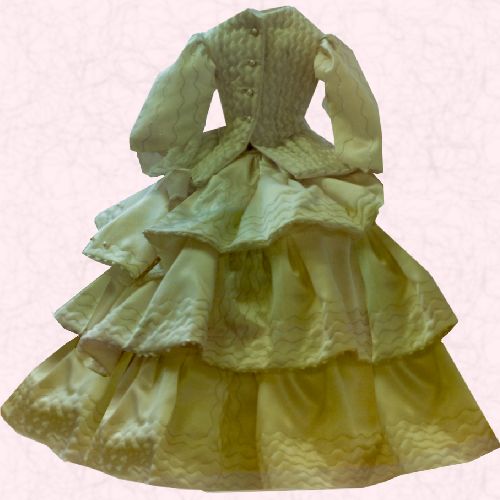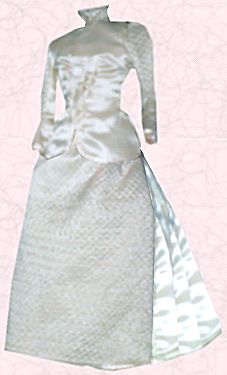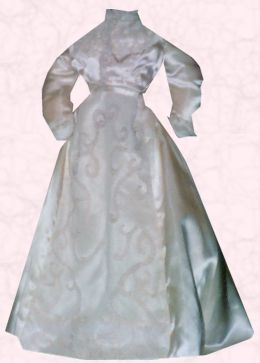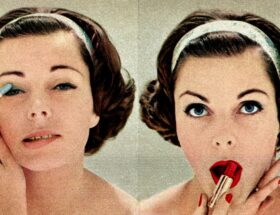By Pauline Weston Thomas for Fashion-Era.com
- French Fashion Dolls in History
- Janet Arnold's Patterns of Fashion Books
- Making Small Scale Fashion Costumes and Stands
- Photographs of Scaled Down Costumes
French Fashion Dolls in History
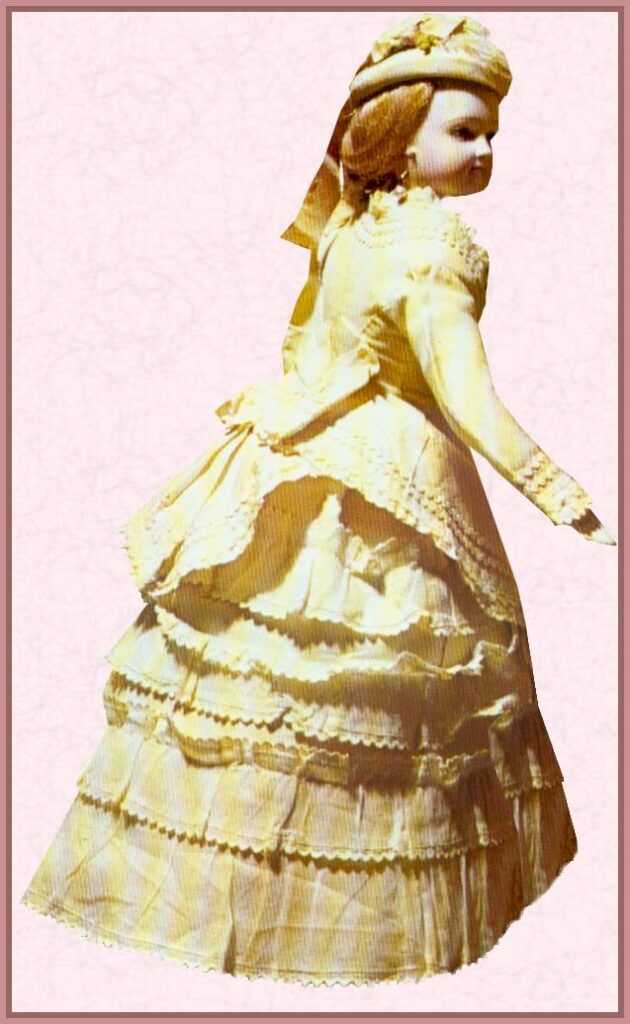
Louis XIV wanted all of Europe to know about Paris fashions, so he sent life-sized fashion dolls to every European Court. The dolls were dressed in the latest styles. Noble ladies would have their tailors imitate the clothes, footwear, hats, and accessories on the latest dolls.
The painstakingly correct dolls' clothes were beautiful and included every construction detail. The dressmakers were able to remove the clothes and copy them as patterns which they would then grade to the size of individual customers.
If necessary they would unpick the stitched outfits, assess the cut of the pattern and then remake the fashion doll's costume. The miniature fashion dolls were passed from court to court throughout Europe.
They were exquisite and represented the latest word in fashion and trimmings. These alabaster or china dolls were sent to Europe and America in the 19th century.
Although effective paper patterns were developed in the Victorian era the use of costumed dolls as models was used even after the Second World War. In mid 1945 the Theatre De La Mode was organised by the Chambre Syndicale of Paris. The Syndicale organized the sending of small-scale couture-designed models abroad.
It was a collaboration of fashion designers and artists for the spring and summer of 1945 fashions. It was intended to show the supremacy of French fashion design and was an attempt to reassert French Couture. There is nothing quite like a model mannequin to really show off a garment.
Janet Arnold's Patterns of Fashion
Janet Arnold measured a wide range and variety of costumes in British museums and UK costume collections. She produced scaled one-inch grid patterns for them. These are presented in her books Patterns Of Fashion Parts 1 and 2. I can really recommend these books to you because they are so detailed with hints and tips for making up.
I have made several full-size costumes from these books and many approximately one-third scale costumes. They certainly help in the understanding of earlier construction techniques, especially of the bustle skirt. Even if you never make a costume seeing the inside construction of garments with tapes, padding, stays and boning positioning will all be revealed to you. No serious costume student should miss reading these books.
The books by Janet Arnold that I suggest are called:-
Englishwomen's Dresses and Their Construction C.1660-1860: Patterns of Fashion 1, Vol. 1 and
Engishwomen's Dresses and Their Construction C.1860-1940: Patterns of Fashion, Vol. 2
Making Small Scale Fashion Costumes and Stands
When teaching Fashion courses, I sometimes encouraged students to make up costumes using her patterns. But to reduce the costs of materials and the time involved we scaled the patterns down by drafting the patterns onto one-centimetre squared paper. This paper is easily available by mail order from MacCulloch and Wallis of Dering Street, off Oxford Street, London, UK. They also now operate an internet service.
This reduction in grid size produces a reduced size pattern which would be two and a half times larger if drafted to full scale. You get a final pattern garment length that is about 18 to 20 inches depending on the original size of the wearer of the garment.
To make the project relevant to today the students decorated the costumes using techniques old and modern, from ribbon application, smocking, and drawn thread work, to quilting with a twin needle, drop feed free machine embroidery or computer-aided embroidery. In this way, they were also able to extend their creative skills of methods and machinery and gain a great deal of costume construction experience in one exercise.
Photographs of Scaled Down Costumes
Below are some pictures of costumes typically made by a selection of past students. Sometimes we made wire and papier mache stands based on the instructions that can be found in Janet Arnold's book called A Handbook of Costume.



